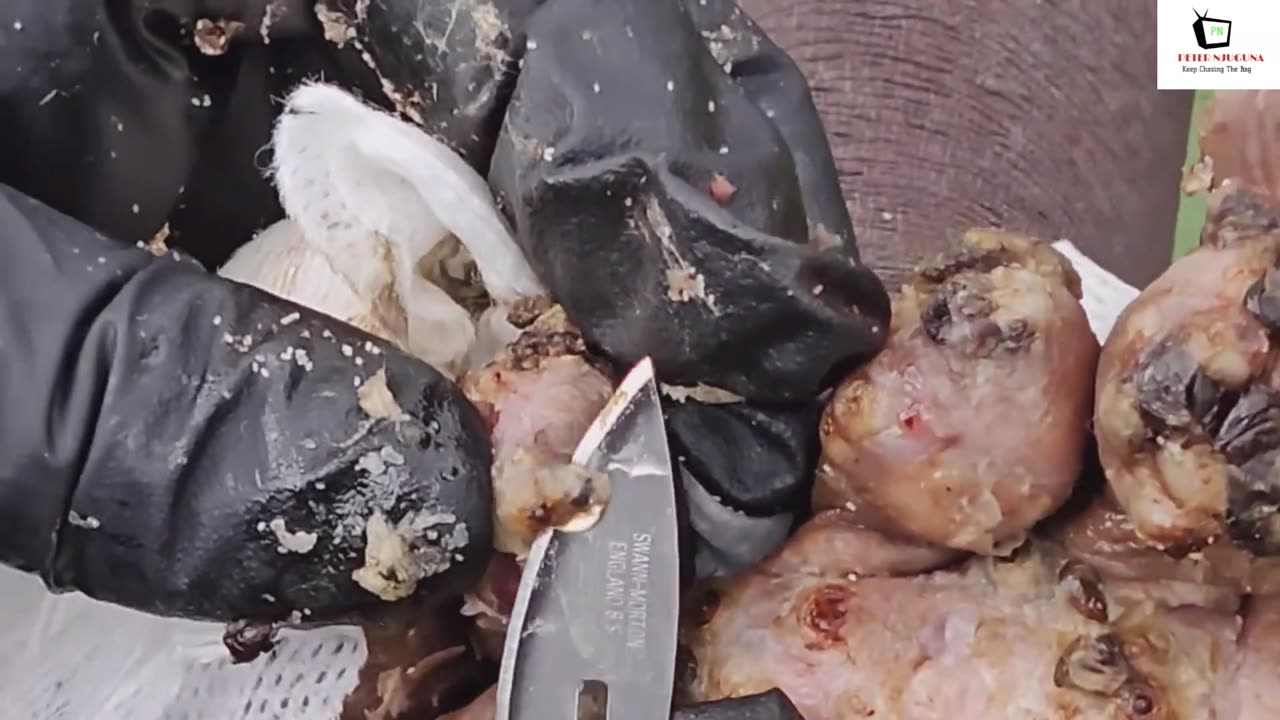Premium Only Content

😭SERIOUS Jiggers infestation #Jiggerdigging SUPPORT PayPal njugunapeter908@gmail.com
Understanding Jiggers: Causes, Prevention, and Treatment
Jiggers, also known as sand fleas or chigoe fleas (Tunga penetrans), are tiny parasitic insects that burrow into the skin of humans and animals, causing significant discomfort and health issues. These parasites are predominantly found in tropical and subtropical regions, particularly in areas with sandy soil, such as parts of Africa, Central and South America, and the Caribbean. Understanding the lifecycle, impact, and methods of prevention and treatment of jiggers is crucial in mitigating their harmful effects.
The Lifecycle of Jiggers
The lifecycle of a jigger begins when a female flea, measuring about 1 millimeter in length, penetrates the skin of its host. Typically, it targets the feet, particularly around the toenails and between the toes, but it can also affect other parts of the body. Once embedded, the flea feeds on the host's blood and swells up to the size of a pea as it matures. Within a week, the flea starts to lay eggs, which are expelled onto the ground. The eggs hatch into larvae, which then develop into adult fleas, continuing the cycle.
Health Implications of Jigger Infestation
Jigger infestations, known medically as tungiasis, can cause a range of health problems:
1. Pain and Discomfort: The initial stage of infestation causes itching and irritation, which can progress to intense pain as the flea burrows deeper into the skin.
2. Secondary Infections: The wounds created by jiggers can become infected with bacteria, leading to severe secondary infections if not properly treated.
3. Ulceration and Tissue Damage: Prolonged infestation can result in ulceration, necrosis, and in extreme cases, the loss of toes or limbs.
4. Impaired Mobility: Severe infestations can hinder mobility, especially in children and the elderly, affecting their ability to walk and perform daily activities.
Prevent of Jigger Infestation
Preventing jigger infestations requires a combination of personal and community-level measures:
1. Footwear: Wearing closed shoes reduces the risk of jigger penetration. Sandals and flip-flops, though common in affected regions, do not provide adequate protection.
2. Hygiene: Regular washing of feet with soap and water helps remove potential fleas before they burrow into the skin.
3. Environmental Control: Spraying insecticides in infested areas and improving sanitation can significantly reduce the population of jiggers. Maintaining clean, dry environments and reducing sandy or dusty areas around homes are also effective strategies.
4. Education: Raising awareness about jiggers, their impact, and preventive measures is essential in communities at risk.
Treatment of Jigger Infestation
If an individual is infested with jiggers, prompt and appropriate treatment is crucial:
1. Manual Extraction: The primary method of treatment involves carefully removing the flea with sterile equipment, such as a needle or scalpel. This should be done by a trained healthcare provider to minimize the risk of secondary infections.
2. Antiseptic Application: After extraction, applying antiseptic solutions helps prevent bacterial infections.
3. Antibiotics: In cases where secondary infections are present, antibiotics may be prescribed to combat bacterial infection.
4. Pain Management: Over-the-counter pain relievers can help alleviate discomfort during the healing process.
Community Efforts and Support
Combating jigger infestations requires community involvement and support from health organizations:
1. Medical Camps: Organizing medical camps in affected areas provides access to treatment for those who cannot afford or reach healthcare facilities.
2. Support Programs: Programs that provide free or subsidized footwear and sanitation materials can help reduce the incidence of jigger infestations.
3. Research and Monitoring: Ongoing research into jigger behavior, lifecycle, and effective control measures is crucial for developing better prevention and treatment strategies.
Conclusion
Jiggers are a significant public health concern in many tropical and subtropical regions, causing considerable pain, disability, and social stigma. By understanding their lifecycle, implementing preventive measures, and ensuring proper treatment, communities can effectively reduce the burden of jigger infestations. Collaborative efforts between individuals, communities, and health organizations are essential in eradicating this parasitic threat and improving the quality of life for those affected.
Follow me on
Instagram: / peternjuguna01
Facebook: / peter.riffic
PayPal njugunapeter908@gmail.com
-
 55:28
55:28
Glenn Greenwald
12 hours agoGlenn Reacts to Trump-Zelensky Exchange and Takes Q&A from our Members | SYSTEM UPDATE #415
141K240 -
 4:26:54
4:26:54
Nerdrotic
15 hours ago $39.75 earnedMarvel PANIC MODE! Kathleen Kennedy GONE?! Hollywood DEI Dead | Friday Night Tights 342 Nick Freitas
150K41 -
 1:30:03
1:30:03
Flyover Conservatives
1 day agoZelensky Fail... God Called IT!; From Prison to the White House: Angela Stanton King’s Unbelievable Redemption Story | FOC Show
62.2K6 -
 1:06:14
1:06:14
IsaacButterfield
14 hours ago $2.49 earnedFree Speech Is Dead | Did Trump Go Too Far? | Sexist Job
51.9K21 -
 1:02:59
1:02:59
Sarah Westall
17 hours agoEpstein Files, Dueling Cabal Factions and Gold from Ancient Civilizations w/ Dave Hodges
79.8K23 -
 3:15:08
3:15:08
I_Came_With_Fire_Podcast
15 hours ago“Trump-Zelensky BEATDOWN | Europe BUILDS MUSCLE | NEWSCUM Podcast”
23.6K3 -
 41:25
41:25
CatfishedOnline
15 hours ago $2.25 earned23-Yr-Old Drove 2,650 Miles to Meet Online Girlfriend in Romance Scam
45K6 -
 1:56:18
1:56:18
Bare Knuckle Fighting Championship
2 days agoCountdown to BKFC FIGHT NIGHT ALBUQUERQUE & FREE LIVE FIGHTS!
39.1K2 -
 1:58:08
1:58:08
Anthony Rogers
14 hours agoHow To Beat Kids At Video Games
15K1 -
 1:46:26
1:46:26
Vigilant News Network
16 hours agoDiddy’s Epstein Moment: Is the Fix Already In? | The Daily Dose
92.3K9